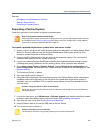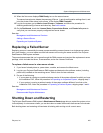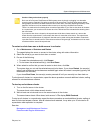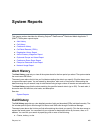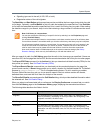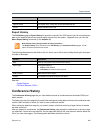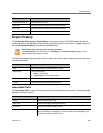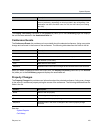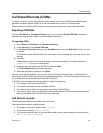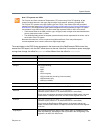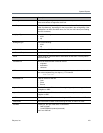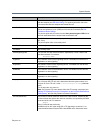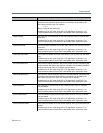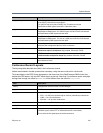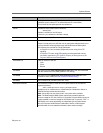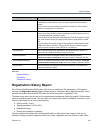
System Reports
Polycom, Inc. 411
Call Detail Records (CDRs)
In addition to the online call and conference history reports, the Polycom RealPresence DMA system
generates call detail records (CDRs) for all calls and conferences, which you can download.
The procedure for exporting CDRs and the record layouts are described in the sections that follow.
Exporting CDR Data
From the Call History or Conference History page, you can use the Export CDR Data command to
download call detail records (CDRs) for the time period you specify.
To download CDRs
1 Go to Reports > Call History (or Conference History).
2 In the Actions list, click Export CDR Data.
3 In the Export Time Frame dialog, set the Start Date and time and the End Date and time you want
to include.
The defaults provide all CDR data for the current day. Times and dates are in the time zone of your
browser.
4 Click OK.
A Save dialog prompts you to select a location for the downloaded file. The default filename is
cdrExport.zip, but you can change that.
5 Choose a path and filename for the CDR file and click Save.
The File Download dialog shows the progress.
6 When the download is complete, click Close.
After you unzip the download file, you can open the two CSV files it contains (one for calls and one for
conferences) with Microsoft Excel or another spreadsheet application. The CSV files contain a line for each
call or conference that ended during the selected time frame.
The ZIP file also includes a text file that contains a single line specifying:
● The number of calls in the call CDR file.
● The number conferences in the conference CDR file.
● The clusters whose calls and conferences are included in the CDR file.
● The clusters whose calls and conferences are excluded from the CDR file because those clusters
were not reachable when the CDR export was generated.
Call Record Layouts
The following table describes the fields in the call records.
Field values are enclosed in double quotes if:
● They begin or end with a space or tab (" value").
● They contain a comma ("Smith, John").
● They contain a double quote. In that case each double quote is also preceded by a double quote
("William ""Bill"" Smith").



